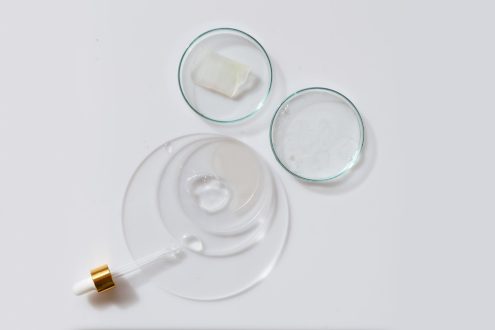- Empty cart.
- Continue Shopping
How to Test and Improve Your Skincare Products
How to Test and Improve Your Skincare Products
Developing high-quality skincare products involves continuous testing and improvement to ensure they are safe, effective, and meet customer expectations. A well-organized testing process helps you identify areas for improvement, ensures product consistency, and strengthens your brand’s reputation. Here’s a guide on how to test and improve your skincare products.
1. Conduct Initial Stability Testing
- Why It’s Essential: Stability testing ensures that your product maintains its integrity, effectiveness, and appearance over time.
- How to Do It: Store your product in various conditions (such as high heat, light, and humidity) and check for changes in texture, color, scent, or separation. This testing phase will help you determine the product’s shelf life and the type of packaging needed for protection.
Tip: Document any changes you observe to make informed adjustments to your formulation or packaging.
2. Perform Microbial Testing for Safety
- Why It’s Essential: Microbial testing ensures that your product is free from harmful bacteria, mold, and yeast, which can impact both safety and effectiveness.
- How to Do It: Work with a certified lab to test for microbial contamination, particularly in products that contain water, as they’re more susceptible to microbial growth.
Tip: Consider using preservatives (especially if your product contains water) to keep the formula safe for long-term use.
3. Test for pH Levels
- Why It’s Essential: Skincare products need to be pH-balanced to prevent skin irritation and ensure product effectiveness.
- How to Do It: Use a pH meter to test the product’s pH and ensure it aligns with the skin’s natural pH range (typically 4.5 to 5.5 for most facial skincare products). Adjust ingredients as needed to balance the pH.
Tip: pH is particularly important for products like cleansers and toners, where an unbalanced pH can impact the skin barrier.
4. Perform Sensory Testing
- Why It’s Essential: Sensory testing assesses the product’s texture, scent, and feel, which influence customer experience and satisfaction.
- How to Do It: Gather a group of testers who represent your target audience and ask them to evaluate the product’s feel, scent, and overall experience on the skin. Take note of any feedback on texture, absorption rate, and scent.
Tip: Address any feedback on issues like greasiness or scent intensity to enhance the product’s appeal.
5. Conduct Patch Testing for Sensitivity
- Why It’s Essential: Patch testing helps identify potential irritants or allergens, minimizing the risk of adverse reactions in users.
- How to Do It: Have testers apply a small amount of product to a discreet area (like the forearm) and monitor for reactions over 24-48 hours. If the product causes redness, itching, or other reactions, identify and adjust the offending ingredient.
Tip: Ensure that patch testing is done across a variety of skin types to get comprehensive feedback.
6. Evaluate Ingredient Effectiveness
- Why It’s Essential: Evaluating ingredient effectiveness ensures that the product delivers its intended benefits, such as hydration, brightening, or soothing.
- How to Do It: Conduct tests with different concentrations of active ingredients to find the optimal level that provides noticeable results without causing irritation.
Tip: Research clinical studies on key ingredients to determine the ideal concentration levels for effectiveness.
7. Analyze Customer Feedback and Reviews
- Why It’s Essential: Customer feedback provides real-world insights into how your product performs, allowing you to address any issues and make improvements.
- How to Do It: Collect feedback from customers via surveys, product reviews, and social media. Track common feedback, such as scent, feel, and effectiveness, to understand areas that may need refinement.
Tip: Use this feedback to identify trends, such as complaints about packaging or scent, and implement changes based on what customers value most.
8. Perform Dermatological Testing (if Possible)
- Why It’s Essential: Dermatological testing provides an extra layer of safety and credibility, especially for sensitive skin or specialty products.
- How to Do It: Partner with a dermatologist or clinical testing lab to conduct dermatological assessments, which confirm that your product is safe for sensitive skin.
Tip: Highlight dermatologically tested claims in your marketing materials, as this builds trust with customers.
9. Use Comparative Testing Against Competitors
- Why It’s Essential: Comparative testing helps you understand how your product measures up against competitors, giving you insights into strengths and weaknesses.
- How to Do It: Conduct blind testing where testers evaluate your product alongside competitors’ products, focusing on areas like texture, scent, effectiveness, and ease of use.
Tip: Use findings to refine product elements and identify key differentiators to highlight in your marketing.
10. Test for Packaging Compatibility
- Why It’s Essential: Packaging can affect product stability, so it’s important to test for compatibility to ensure product longevity.
- How to Do It: Conduct testing to see if the packaging reacts with or degrades the product. Pay particular attention to items like pump mechanisms, droppers, and jar linings that might interact with ingredients.
Tip: If you notice issues like leaking or clogging, consider alternative packaging materials or designs to improve product stability.
11. Continuously Monitor for Improvement Opportunities
- Why It’s Essential: Regular monitoring helps you maintain quality and improve over time based on changing trends or customer needs.
- How to Do It: Set up a system for tracking customer complaints, batch testing, and returns. Revisit formulations periodically to make updates based on new ingredients, technology, or research findings.
Tip: Schedule annual reviews of all products to determine if updates or improvements are needed.
Key Benefits of Product Testing and Improvement
- Enhances Product Safety: Testing ensures products are safe for a wide range of skin types, helping to prevent negative reactions.
- Builds Customer Trust: Consistent quality and responsiveness to feedback build trust and increase customer loyalty.
- Improves Product Performance: Testing and refining help ensure that your product performs as promised, increasing customer satisfaction and positive reviews.
- Reduces Returns and Complaints: A well-tested product minimizes customer dissatisfaction, which translates to fewer returns and complaints.
Conclusion: Refining Skincare Products for Long-Term Success
Testing and refining your skincare products are essential steps in building a reputable brand. By conducting thorough testing, gathering customer feedback, and making ongoing improvements, you’ll create products that meet customer expectations and deliver on their promises. The investment in testing not only strengthens your brand reputation but also lays the foundation for long-term success in the skincare industry.
Interested in creating your own product line? Explore our private labeling options and bring your brand vision to life. Fill out our Form to get started.
Discover more about our services by visiting our website.

